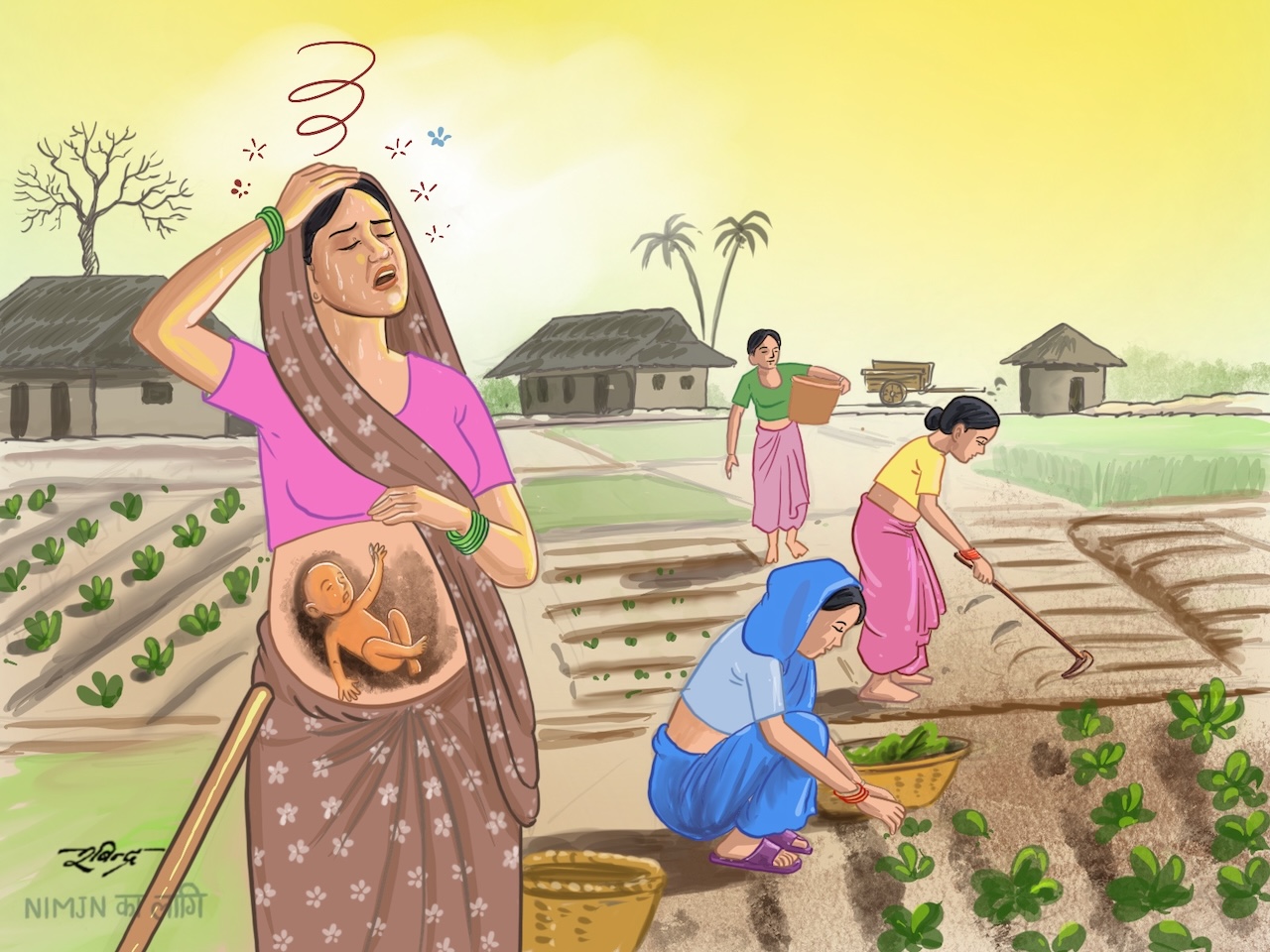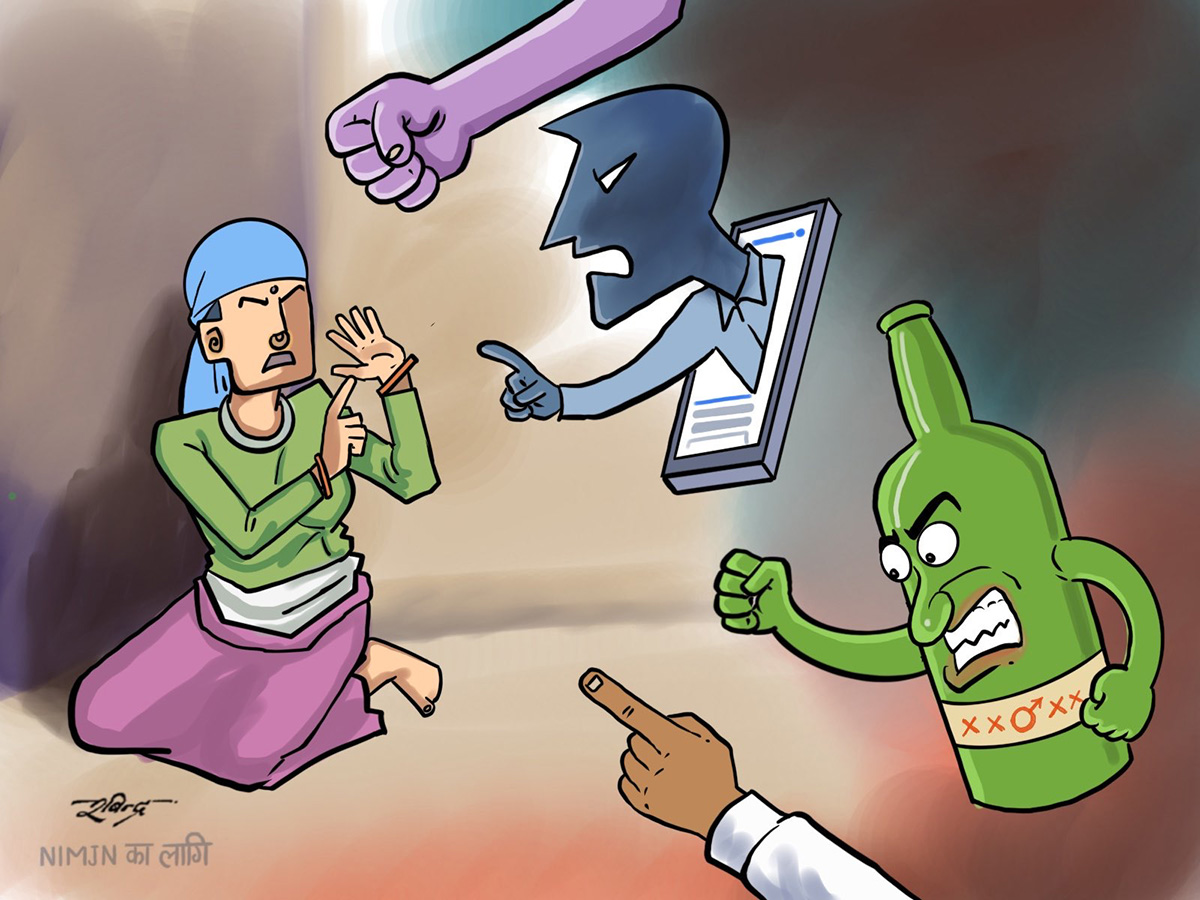He is a 13-year-old cute, sparkling boy but refrains from speaking and interacting with his parents at home. He distances himself from friends, and confines himself in his room, drooping or just playing with his fingers. His mother calls him for his meal but he does not respond. He does not say a word.
 For long, his parents took this behavior as changes taking place due to puberty and did not bother much.
For long, his parents took this behavior as changes taking place due to puberty and did not bother much.
His mother only understood what her son was going through when, one day, she found his diary: He was bearing the brunt of bullying at school. “My son writes in his diary every day and from his diary I came to know what he was going through,” the mother said, aghast. So much so that he had written an application to the school demanding, with reason, that he be expelled from there. “In two years from now, I might kill myself. So, please expel me from school,” he wrote in the application letter.
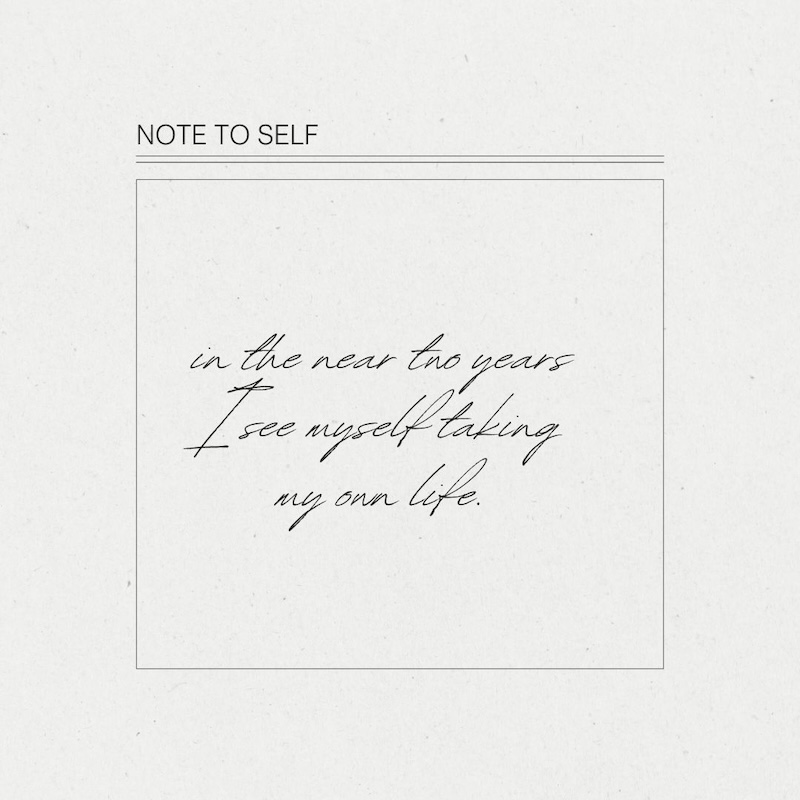
He also stated in that application that he saw no hope and future in life as teachers and friends from school did not like him, and their behavior deeply hurt him. He appealed in the application that the school, for the sake of its reputation, should declare him a bad student and expel him. He also mentioned that he loved to study in a ‘gender neutral’ environment and that would be appropriate for him.
The school, shocked to receive such an application, promptly called his parents. His mother, who already knew what her son was going through from his diary, was now clear about the turmoil that he was actually going through.
The boy thought expulsion from school was the best solution to the problem he was facing. But his diary and his application to the school prove that there was one big reason for his frustration: Bullying.
“My son cries and says that he has been bullied by friends at school,” said his mother. “We know nothing about it. Maybe the school will help but we have no knowledge on how to address such an issue, nor the money.”
It pushed him to the verge of suicide at an age when he was supposed to be playful, studying and having fun with friends. Bullying made him feel that life had no further meaning and his friends, peers and teachers made him feel so.
This ‘hard to believe in’ incident shocked and shattered his mother. “I panic to realize that my son was contemplating suicide because of bullying. Because he was bullied, he developed this scary thought,” said his mother.
He is coming to terms and recovering gradually thanks to the help from his parents but he has not received any psycho-social counseling from the school because bullying is not taken as an alarming issue in schools. Besides, little concern is paid toward what psychological impact humiliation from friends and teachers would have on a child.
Clause 13 of the Act Relating to Children (2018) ensures every child the right to proper nutrition and clean drinking water. A child up to two years of age also has the right to breastfeeding. Likewise, children also have the right to utilize physical and mental health services established according to the national standards, to get information about their body, reproduction and reproductive health according to age and maturity and they have the right to obtain free basic health service.
But there is no provision, as yet, of providing psycho-social counseling to such students.
Another student studying in grade seven in a school in Kathmandu was also found to have been at the risk of suicide. This came to light after a note was discovered in one of his notebooks. “I hope whatever has happened to me never happens to others. May nobody else have to go through what I am going through,” he had written in his notebook. “I know that suicide is not the solution but I have almost reached that point,” his note revealed.
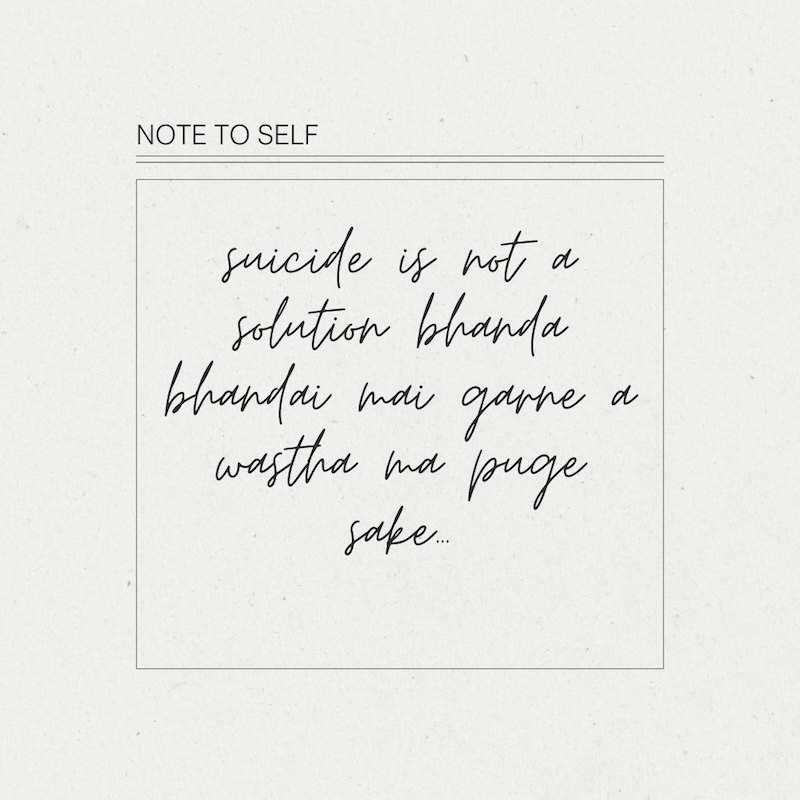
When his teachers came to know about this, they consulted a psycho-social counselor to address the issue of the 12-year-old. They hired the psycho-social counselor for certain months but could not afford the pay and soon such counseling stopped altogether.
Schools have no resources to continue with counseling services and parents have no knowledge about how it impacts the health of their children.
Bullying in schools
The two students mentioned in the cases described above share different backgrounds but their problems are common – their gestures, their way of life is very different from the ways of their friends and peers. These two students were often humiliated, insulted and name-called for demonstrating behavior considered to be out of bounds of ‘social sexual norms.’ The insensitivity on the part of his friends led them to depression. Such repeated behavior exacerbated their mental health and also triggered suicidal thoughts in them. The root cause of this was bullying.
Britannica defines bullying as “intentional harm-doing or harassment that is directed toward vulnerable targets and typically repeated.” It says “bullying encompasses a wide range of malicious aggressive behaviors, including physical violence, verbal mockery, threats, ostracism, and rumors spread either orally or by other means of communication, such as the internet. Bullying can take the form of physical assault, teasing, making threats, name-calling and cyberbullying such as bullying via mobile phone or online (for example email, social network and instant messenger). It also takes the form of inflicting pain and suffering on others and taking pleasure out of it.
The repeated insults and name-calling by students of the same class could have led these two students to feel their sense of dignity was deeply hurt. There are some who suffer depression and trauma due to the hostile behaviors of their peers but rarely do people seem to care how a small mistake could lead to these consequences. When teachers (inadvertently) too get into this, the victims feel that the world has come to an end for them. Victims then feel that there is no room for them in this society and the world.
Bullying does not feature as a prominent issue in Nepal’s laws and policy documents but the Act Relating to Children (2018) prohibits actions that qualify as bullying. Clause 66 of the Act says the following activities amount to the acts of violence against children: To inflict physical or mental punishment on, or behave, in an undignified manner, whether at home, school or any other place, to inflict physical injuries or effect to, terrorize or intimidate, humiliate, neglect, discriminate, exclude or hate, isolate, or cause mental torture to, and to harass, cause pain to, him or her by using electronic or other means, among others.
“Though the law does not use the word ‘bullying',” said Ram Bahadur Chand, Information Officer at the National Child Rights Council, “it [bullying] has been included in the law.” “If you do not behave in a dignified manner with a child, that is bullying. Our law does not mention the word bullying but it has provisions against bullying.” According to the Act, bullying attracts the violence against children law in Nepal. Bullying inflicts social and psychological pain on children but there is no legal redress to this situation: Clause 57 states: “A school, every public body, private sector as well as social organization directly working with children shall formulate and enforce child protection standards at the institutional level, in order to prevent violence against children or child sexual abuse, ensure protection of children and immediately take action on complaints.” Likewise, it also says “it shall be the responsibility of the school, chief of every public body, private sector and social organization to enforce the child protection standards.”
If these provisions were fully implemented, the two children (mentioned above) would not have had to undergo that particular situation of violence.
Silent killer
Child protection measures are absent in school settings although it is provisioned in the law. This is the reason the cases of children committing, or attempting to commit suicide, are reported now and then. On July 23, 2023, a girl studying in New Vision School (a school located in Koteshwor of Kathmandu) committed suicide. The 11-year-old fifth-grader killed herself at her home soon after returning from school one day. Police report showed no signs of injuries on her body but post-mortem report confirmed that it was a suicide case. The police say since no note (whatsoever) was left the exact cause of suicide cannot be ascertained. “I asked the class teacher if there were any signs of suicidal tendencies in her. He said there were none,” said Ganesh Bhattarai, the principal of the school. “She was such a nice student. The unthinkable happened.” According to the principal there were no signs of bullying. “We did not find that she was teased, insulted and humiliated by others. Yet, that unthinkable tragedy happened, and it has alerted us,” the principal further added.
A similar incident took place in Hariharpur Gadhi Rural Municipality-8 of Sindhuli district. An 11-year-old boy committed suicide on August 2, 2023. Police records mention his ‘mental health was not right'. Another child from Dudhauli Municipality-11 from the same district committed suicide on May 25, 2023. Police say the cause of the nine-year-old boy’s suicide ‘has not been ascertained'.
Why do such young angels end their lives? Psychiatrists say there must be more than meets the eyes. According to Dr Amit Jha, who works at the Child and Adolescent Mental Health unit at Kanti Children’s Hospital, it is not only physical and emotional causes, sexual violence, abuse and bullying are also among the major factors. “We need to address the issue of bullying at the school level itself,” he said. “We need to educate people that this is not normal behavior. Whatever we know about bullying is only a tip of the iceberg, we do not get to know about many other cases.” According to Dr Jha, bullying happens when the balance of power is broken. "Where there is no balance of power, there is bullying and there is more possibility of this happening in schools,” said Dr Jha. Some students intimidate the weak and younger students by using force and this happens frequently. The victims may even develop anxiety and depression because of this, according to Dr Jha. “This deeply hurts the dignity of the young minds and this leads to stress which leads to depression. And when depression gets worse it invites complicated mental health problems. The victims might have to seek treatment in a hospital, some of them even attempt suicide,” said Dr Jha.
According to American Academy of Child and Adolescent Psychiatry, the main cause of suicide among children and adolescents is depression, and bullying is the main cause of suicide among young children.
According to Nepal Police, a total of 795 children in Nepal have committed suicide in the last five years. Of them 266 were boys and 529 girls. “Most of them committed suicide by hanging and others by consuming poison,” said Bhim Prasad Dhakal, Deputy Inspector General and National Spokesperson of Nepal Police. The number of children who committed suicide by hanging was 730, of which 245 were boys and 485 girls. A total of 16 boys and 44 girls committed suicide by consuming poison.
An unsolved mystery
Nepal Police has the record of the young boys and girls committing suicide but they actually do not know why they are resorting to such harsh measures. No attempt has been made to look into the issues related to bullying – for there has been no national level research and study on bullying. There has been no research and study, nor any program on bullying and its toll on psycho-social well-being and growth of children, informed Sabita Aryal, who is the Under-Secretary at the Division of Child Protection and Development under the Ministry of Women, Children and Senior Citizens. Chandra Bhusan Yadav, who is the Information Officer at Nepal Health Research Council (NHRC), says that there has been no research and study at the national level on this subject. According to the National Mental Health Survey published by NHRC in 2020, 3.9 percent children develop suicidal thoughts. The survey covered 9,002 children above 18 and 5,888 children and adolescents aged 13-17. The survey does not include children below 13 and the possible suicidal thoughts they may have had. Though there has been no study and survey on bullying at the national level, the 2020 research on bullying in school level and its impacts on children by Dr Megh Raj Dangal and Aishwarya Rani Singh, associate professors at Kathmandu University, show that nearly half of the children have no clue about bullying. “The research showed that the number of children who said they were affected by anxiety, depression and other psycho-social issues triggered by bullying was one-third,” said Dr Dangal. “But in Nepal, bullying and the psycho-social impacts it can have on children is still not in priority.” Mental health is such a sensitive issue and it should deserve due attention but it still remains the least prioritized issue, he added. “Many parents do not care much about bullying. We all need to be really watchful about it, parents in particular,” he said.
Barsha Sapkota, 34, mother of a nine-year-old son who studies in grade four, has no clue about what bullying is. “Is there bullying in Nepali schools?” she asked. “I have heard that this happens in foreign countries but I have no clue this is happening in Nepal as well.” “The school does not tell us anything about it and we also felt that bullying does not happen in Nepal.”
Like Barsha, the mother of the 13-year-old boy (the victim in the opening paragraph), was alarmed only when her son was on the verge of committing suicide because of bullying. “We never knew this was the main cause behind his silence and isolation from us. But now we have become alert,” she said.
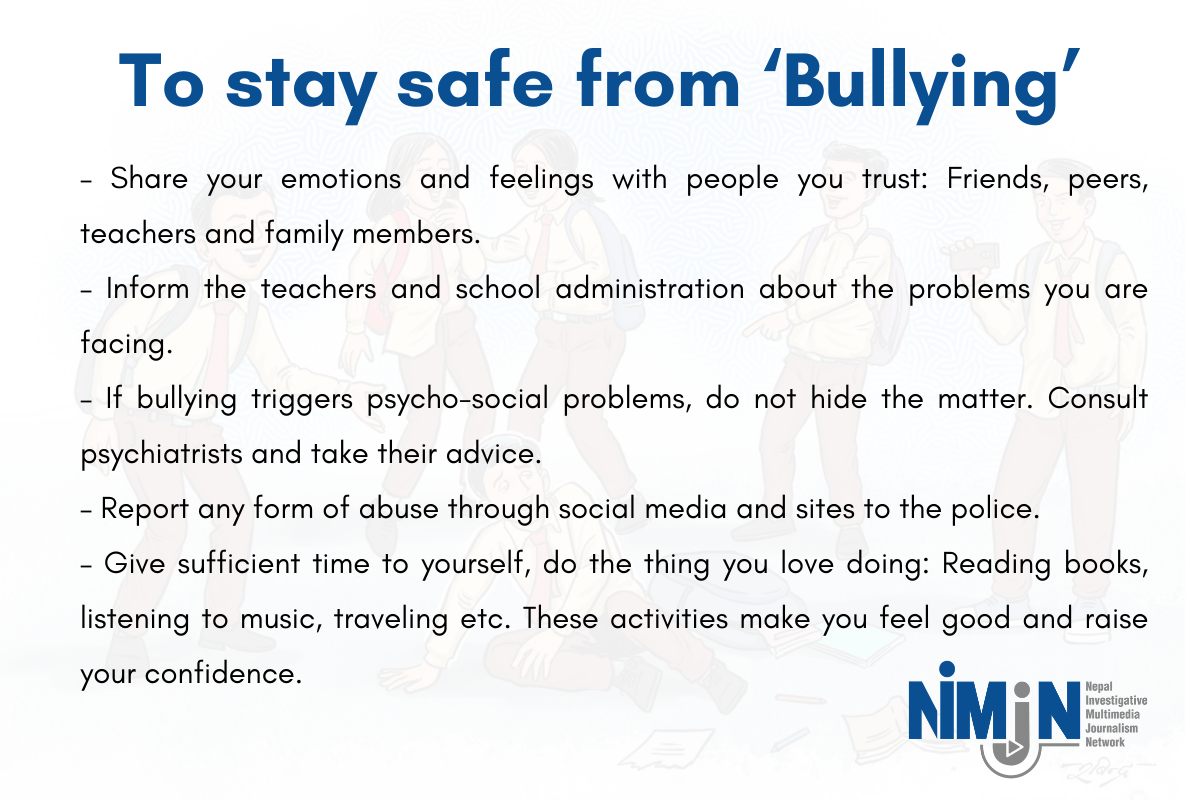
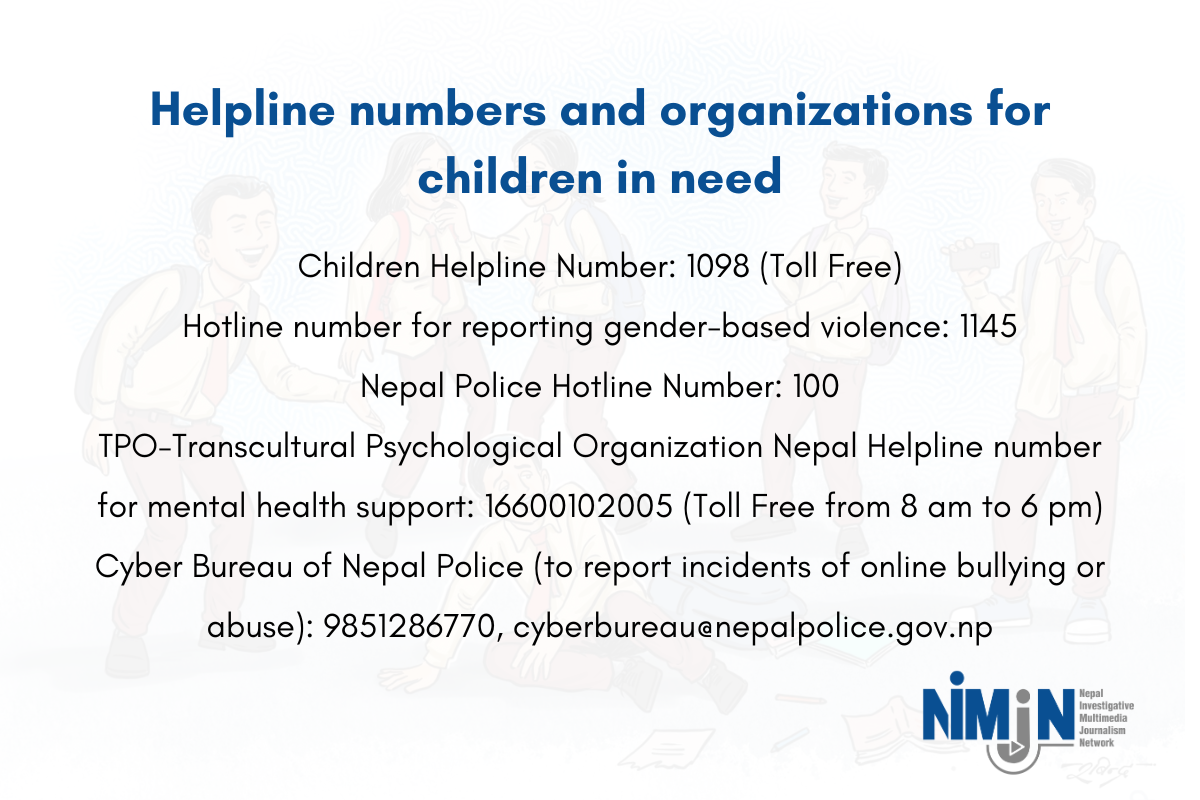
Read our Republishing Policy here.

